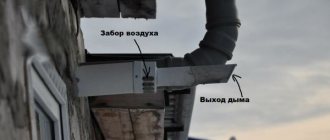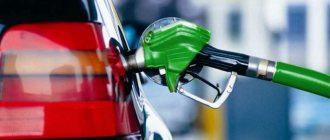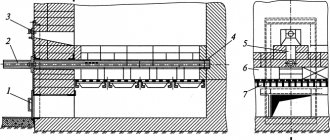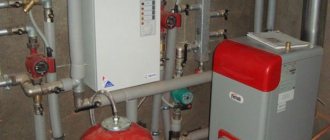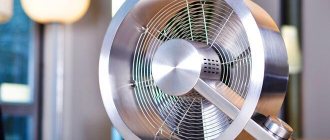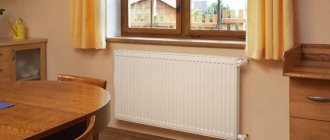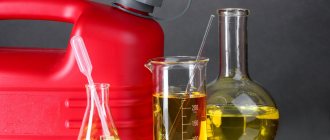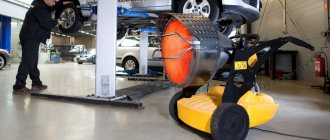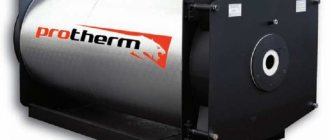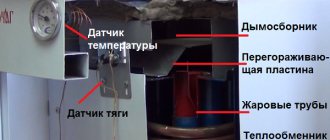Conclusions and useful video on the topic
A clear example of calculating the cost of heating water with devices of different types:
A way to reduce gas consumption and save time on cleaning the hob:
Gas consumption and the total power of the burners have a directly proportional relationship. If we imagine that the parameters for calculating consumption are equal to the average, it will be enough to find out the performance of the burners, and it will become clear how much they save gas.
You cannot do without calculations using the formula if you know the exact efficiency of the model or are going to determine it. After power, this is the second most important indicator in terms of costs. Stovetops with a hob and gas oven have higher fuel consumption, but a gas stove can be better at cooking quality than a high-efficiency electric stove.
Write comments on the topic of fuel consumption of gas stoves. Tell us if you have measured the gas consumption level of your stove. If yes, then write why and what it gave you. The contact form is located below.
Source
Burner classification
Main functions of gas burners:
- supply of gas and air to the gas combustion front;
- mixture formation;
- stabilization of the ignition front;
- ensuring the required intensity of the gas combustion process.
Burners can be classified according to:
- gas combustion method,
- air supply method
- gas pressure,
- burner emissivity,
- the location of the burner in the combustion chamber.
According to the method of air supply, burners are divided into:
- to blowless ones, in which air enters the firebox due to rarefaction in it;
- injection, into which air is sucked in using the energy of a gas stream;
- blowing, in which air is supplied to the burner or firebox using a fan.
Burners can operate at different gas pressures:
- low – up to 5000 Pa,
- average – from 5000 Pa to 0.3 MPa,
- high – more than 0.3 MPa.
The most common are burners operating at low and medium gas pressures.
An important characteristic of the burner is its thermal power, kJ/h:
QT = QHVh, (1)
where QH is the lower calorific value of gas, kJ/m3; Vh – hourly gas consumption by the burner, m3/h.
There are maximum, minimum and nominal thermal powers of gas burners.
Maximum thermal power is achieved by long-term operation of the burner with high gas flow and without flame separation.
The minimum thermal power occurs when the burner operates steadily at the lowest gas flow rates without flame slip.
The rated thermal power of the burner corresponds to the operating mode with the rated gas flow rate, that is, the flow rate that provides the highest efficiency with the greatest completeness of gas combustion. The burner data sheets indicate the rated thermal power. The maximum thermal output of the burner should exceed the rated output by no more than 20%. If the rated thermal power of the burner according to the passport is 10,000 kJ/h, then the maximum should be 12,000 kJ/h.
An important characteristic of the burner is the thermal power control limit n = 2–5:
n = Qr min/Qr max (2)
where Qr min is the minimum thermal power of the burner; Qr max – maximum thermal power of the burner.
General requirements for all burners: ensuring complete gas combustion, stability with changes in thermal power, reliability in operation, compactness, ease of maintenance.
Tips for saving gas
Follow these simple tips to reduce gas consumption when cooking on the stove.
- Use only the heat that is sufficient for the cooking, frying or stewing process, and do not exceed the heat.
- After the water or broth boils, the flame can be pressed to a minimum.
- The fire heats the bottom of the pan faster and more efficiently if it touches it lightly, rather than covering it from all sides. It has been proven that the highest burner temperature is at the top point of the flame.
- When the container is placed on the burner, close it with a lid. The boiling and cooking process then goes faster. Some food is cooked only with the lid open, but heating water to a boil or heating the dishes initially with the lid closed will not harm the dish itself.
- Make sure that there is no draft in the room where the cooking appliance is located, in which part of the thermal energy is directed to the side and wasted.
- Close the valve when the dish is already cooked. Or press immediately as soon as the water boils.
- Do not heat the contents in a container with a flame turned on. In this case, the walls of the containers give off heat faster, and gas consumption reaches 10–15%.
- Try to cook small dishes in the oven less often. Warming it up takes a lot of resources.
If you have a gas water heater installed in your apartment, you should save water that needs heating. Fill the sink with water when washing dishes, and use running water for rinsing. It has been noticed that if you take a shower rather than a bath, much less hot water is consumed. To save money, special nozzles for shower heads are sold.
If there is individual heating, the largest amount of gas is spent on heating the home. Insulate the house, install a boiler with an automatic thermostat. Reduce the temperature 2 degrees below comfortable. If possible, use a solid fuel boiler, as it is more economical than a gas one.
It would be useful for any utility user to know the fuel consumption and power of their gas stove, boiler, or water heater. Then monthly invoices will not surprise you with their numbers. The ability to independently make calculations will help you compare the maximum and minimum consumption of gas devices and choose the right meter in accordance with the parameters.
When purchasing a metering device, do not destroy the technical documentation for it; it may be useful when installing or replacing them. For old-style gas stoves, the documents for which have been lost, you can take average indicators.
The gas consumption test is shown in the following video.
Pathfinder Atom Energy
Pathfinder Atom Energy
Pathfinder Atom Energy
A rating of tourist equipment simply cannot do without Russian models, and gas burners are no exception.
The new product took into account its old mistakes and presented an updated version with all the necessary attributes.
Among the features, it is worth highlighting piezo ignition, special wind protection of the flame and special stands that guarantee stability in harsh conditions.
And the burner power is enough to maintain a powerful flame in conditions of high humidity and light rain.
Burner power calculation
Calculating the burner power is a procedure necessary in order to select the optimal model that will meet the given conditions.
What is needed to calculate burner power?
To carry out the calculation, the following data is required:
- Types of fuel that will be used in the installation;
- Installation efficiency;
- The pressure of the fuel entering the heating device;
- Counterpressure of the heating device;
- The method by which the power of a gas burner is controlled.
To calculate the burner power, 2 types of formulas are used:
- Q burner = Q boiler / boiler efficiency . For example, the power of a gas burner for a 2500 kW installation with an efficiency of 90% will be equal to 2780 kW.
- Burner Q = (installation Q *100) / (efficiency) , where installation Q is the nominal pressure of the boiler. For example, for a boiler installation of 400 kW and an efficiency of 89%, the power will correspond to 449 kW.
